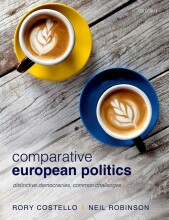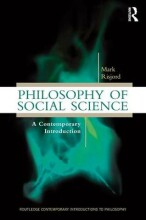Summary: Diversity 2
- This + 400k other summaries
- A unique study and practice tool
- Never study anything twice again
- Get the grades you hope for
- 100% sure, 100% understanding
Read the summary and the most important questions on Diversity 2
-
1 Lecture 1
-
1.1 Notes lecture 1
This is a preview. There are 2 more flashcards available for chapter 1.1
Show more cards here -
What is the link with the quote of Sarte: "The hell, that are the others" and this course?
Basic idea of this course is the symbolic violence: some are accepted, some are discriminated -
What is the subject of Van Ewijk's article?
Implementing diversity into policy -
Which three aspects does Van Ewijk distinguish for policy makers to think about?
What => which categories do we see and which do we neglect?
Why => why do organizations want to pursue diversity in the first place?
How => how do you want to accomplish it? -
What are the 2 approaches inside of the what of Van Ewijk?
Social categories and management: make distinctions! -
What are the three points inside of the why in the article of Van Ewijk?
Can => some can't simply: "quality is what matters"
Want => certain groups are unwilling to do a job: "we cannot find them"
Do => not being allowed to do something -
What are the arguments for the choice: focus on individuals or collectives?
I => deny agencies of individuals, strengthens stereotypes, multiple entities, mutual understanding, collective focus not tested properly, may be more conflictual
We => recognizes groups for freedom, ignore discrimination -
What are the two schools inside of the how of Van Ewijk?
Equal opportunities => we think of a social way
Managing diversity => organization has to deliver output, where diversity can be an aim -
What is Essed's criticism of diversity as a business case?
It is superficial: focus on the image for outside, but real differences are neglected -
What is cultural cloning?
Clone employees to look like each other: how to integrate and regulate 'difference' in the existing cultures/structures without changing the nature? -
1.2 Van Ewijk, A. R. (2011). Diversity and diversity policy: diving into fundamental differences. Journal of Organizational Change Management, 24(5), 680-694.
This is a preview. There are 12 more flashcards available for chapter 1.2
Show more cards here -
What does Van Ewijk notice about the definition of diversity?
It is asocial construction : its definition isinfluenced by the context. It therefore does not have auniversal expression , but is defined differently depending on the context
- Higher grades + faster learning
- Never study anything twice
- 100% sure, 100% understanding
Topics related to Summary: Diversity 2
-
Van Ewijk, A. R. (2011). Diversity and diversity policy: diving into fundamental differences. Journal of Organizational Change Management, 24, 680-694
-
Essed, P. (2002). Cloning cultural homogeneity while talking diversity: Old wine in new bottles in Dutch organizations. Transforming Anthropology, 11, 2-12
-
Notes lecture
-
Gowricharn, R., & Çankaya, S. (2017). Policing the nation: Acculturation and street-level bureaucrats in professional life. Sociology, 51, 1101-1117
-
Çankaya, S. (2020). Geopolicing race, gender, and class: How the police immobilise urban allochthones. Antipode, 52, 702-721
-
Wilkins, V. M., & Williams, B. N. (2008). Black or blue: Racial profiling and representative bureaucracy. Public Administration Review, 68, 654-664
-
Amnesty International Report – Police & Minority Groups, read only pages 35-45
-
Kalev, A., Dobbin, F., & Kelly, E. (2006). Best practices or best guesses? Assessing the efficacy of corporate affirmative action and diversity policies. American sociological review, 71, 589-617
-
Eberhardt, J. L., & Fiske, S. T. (1994). Affirmative action in theory and practice: Issues of power, ambiguity, and gender versus race. Basic and Applied Social Psychology, 15(1-2), 201-220
-
Ramdas, S., Slootman, M., Oudenhoven-van der Zee, K. (2019). The VU Mixed Classroom Educational Model
-
Mergaert, Lut and Emanuela Lombardo (2014): ‘Resistance to implementing gender mainstreaming in EU research policy’, in: Weiner, Elaine and Heather MacRae (eds): ‘The persistent invisibility of gender in EU policy’ European Integration online Papers (EIoP), Special issue 1, Vol. 18, Article
-
Ioana Varbriescu
-
Cynthia Enloe





























